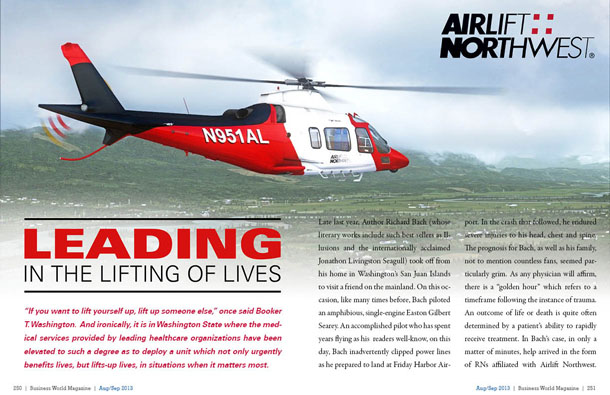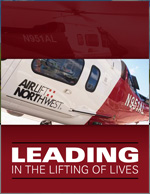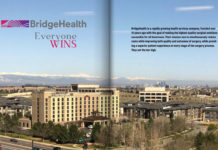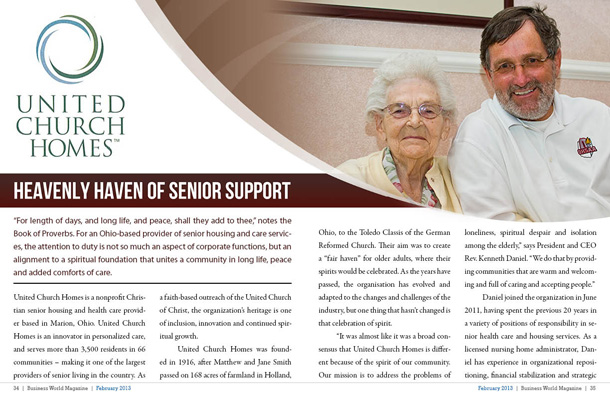

“If you want to lift yourself up, lift up someone else,†once said Booker T. Washington. And ironically, it is in Washington State where the medical services provided by leading healthcare organizations have been elevated to such a degree as to deploy a unit which not only urgently benefits lives, but lifts-up lives, in situations when it matters most.
Â
Late last year, Author Richard Bach (whose literary works include such best sellers as Illusions and the internationally acclaimed Jonathon Livingston Seagull) took off from his home in Washington’s San Juan Islands to visit a friend on the mainland. On this occasion, like many times before, Bach piloted an amphibious, single-engine Easton Gilbert Searey. An accomplished pilot who has spent years flying as his  readers well-know, on this day, Bach inadvertently clipped power lines as he prepared to land at Friday Harbor Airport. In the crash that followed, he endured severe injuries to his head, chest and spine. The prognosis for Bach, as well as his family, not to mention countless fans, seemed particularly grim. As any physician will affirm, there is a “golden hour†which refers to a timeframe following the instance of trauma. An outcome of life or death is quite often determined by a patient’s ability to rapidly receive treatment. In Bach’s case, in only a matter of minutes, help arrived in the form of RNs affiliated with Airlift Northwest. They immediately tended to his injuries, secured him for flight and after taking-off in their helicopter, touched-down minutes later at Harborview Medical Center in Seattle. There would be coma and complications arising from respiratory failure, but doctors feverishly addressed all urgencies, and Bach ultimately survived. He has since credited Airlift Northwest for saving his life and the near-death experience has prompted his rewriting of a new passage to be published with a new edition of Jonathon Livingston Seagull.
Brenda Nelson, Chief Flight Nurse for Airlift Northwest, confesses that no one knew who Richard Bach was when responders were deployed to the medical emergency, and that’s understandable since this team doesn’t focus on saving personalities, but saving people. Over the thirty years of it operation, Airlift Northwest has beneficially impacted many lives, not only in Washington, but Alaska, Idaho and Montana too. Nelson has amassed a number of accounts which speak to the capabilities and critical functions fulfilled by this leading medical air-transport service. From saving the life of a baby born premature to saving victims of strokes and heart attacks, Nelson even imparts a story about a young man who had a genetic heart defect and collapsed while hiking in the Washington wilderness. The remoteness of the area made it a challenge for medical responders, but Airlift Northwest landed their helicopter and took turns administering CPR in conjunction with friends and rural ems providers with hope to establish a functional heart rhythm before transporting the man to hospital. Two nurses took turns maintaining CPR, each working in durations of two minutes, establishing and airway and administering medications and in one of the rarest and most remarkable of medical feats, the man’s heart function returned after 86 minutes of intense effort. “That has become a story we talk about a lot, involving a super nice kid who is doing well today, but stories like that keep us mindful of our mission … we want to give people a greater opportunity to have life, to experience life, and we’re thankful to work for a service which provides that,†says Nelson.
Transiting from Tragedy
Tragically, medical transports services like Northwest Airlift weren’t so accessible in the years prior to the company’s launch in 1982. That fact became too painfully clear following a house fire which occurred in rural Alaska. At the time, a neurologist named Dr. Michael Copass was conducting a training exercise in Alaska when he learned three children had been severely burned in the fire.
The injuries demanded that these children needed immediate transport to a facility with the resources to provide critical treatment, but unfortunately, such transport couldn’t be found. Two children died before transport was secured, and so much time has passed before help was secured, the third child died during transport to the hospital. “It was at that time, Dr. Copass vowed that such a tragedy should never happen again,†says Nelson.
Dr. Copass ultimately founded Airlift Northwest by forming an alliance with a hospital consortium affiliated with UW Medicine, an internationally esteemed leader in healthcare which owns (or operates) Harborview Medical Center, Northwest Hospital & Medical Center, Valley Medical Center, University of Washington Medical Center, the UW School of Medicine, and a network neighborhood clinic and physician practices. With more than 25,000 employees, this enterprise has produced five Nobel Prize winners, 35 Institute of Medicine members and more than 30 members of the National Academy of Science. Collectively, the consortium facilitates some 65,000 admissions and 1.6 million outpatient and emergency room visits annually. In addition to providing patients with the most advanced or latest findings in medical discovery, diagnoses and treatments, its physicians also undertake the research necessary to teach new generations of medical professionals. It is from this very environment that Airlift Northwest emerged to become the region’s very first intensive care air transport unit.
Qualified Capability
Today, Airlift Northwest and its fleet of helicopters and fixed-wing units have grown to provide service throughout Alaska, Idaho, Montana and Washington. Whether it is an emergency dispatch or an inter-facility transport, flights accommodate services with two nurses licensed to provide advanced cardiac life support, advanced pediatric life support, trauma, and neonatal resuscitation. Flight nurses additionally hold certification in critical care nursing, or emergency nursing, flight nursing or have undergone certification as emergency medical technicians. Since 1997, Airlift Northwest has been accredited by the Commission on Accreditation of Medical Transport Services; in fact, it was the first air medical service in Southeast Alaska to garner this recognition which reflects its adherence to the highest of patient care, safety and operational standards within its industry. While its medical personnel can effectively respond to any health crisis, Airlift Northwest also engages pilots that have the necessary training and necessary local knowledge to operate their aircraft. In serving the Pacific Northwest, Nelson explains that pilots encounter all matter of environmental conditions, flying over water, mountainous terrain and air corridors where hot-pockets or winds never make two days the same. Last year, these pilots and medical personnel participated in 3200 transports, caring for lives and saving lives in the process.
In terms of the future, Nelson says Airlift Northwest will remain dedicated to its current region of service while also seeking means to maintain its viability. With much of its funding provided by reimbursements from insurance providers, changes in the healthcare law and declining reimbursement rates have Airlift Northwest seeking new financing solutions. Nelson explains that Airlift Northwest has established a new membership program.
For $79 a year, an entire family could be covered such that if a need for transport by this service occurred, no charges will be assessed to anyone in the family beyond what insurance pays. That’s a small price to pay for the capabilities deployed by Airlift Northwest, but Nelson reminds that it is also a small donation to support a vital service saving lives in the northwest.  She says they also plan to reach out to Washington’s leading pillars of industry and community leaders to connect and cultivate donors. “Dr. Copass use to say that our good work would speak for itself, but we’ve realized that it is important to do more to let people know what we do,†says Nelson.
Of course, for those who have relied on Airlift Northwest, there is clear understanding of why this service is so critically essential. For a case in point, one need only consider Author Richard Bach. In the months that have followed since Airlift Northwest responded to his crash and rushed him to the waiting arms of the doctors that helped save his life, he went on to establish a fund that now benefits critical care programs affiliated with UW Medicine, Harborview Medical Center, and the services provided by Airlift Northwest. This philanthropic fund is appropriately and affectionately known by a title fully indicative of what is so expertly offered by Airlift Northwest – A Gift of Wings.
Gifts to the A Gift of Wings fund can be made online at www.supportuwmedicine.org/wings
For more information, please visit their website at: Â Airlift Northwest
Preferred Vendors of Choice:








